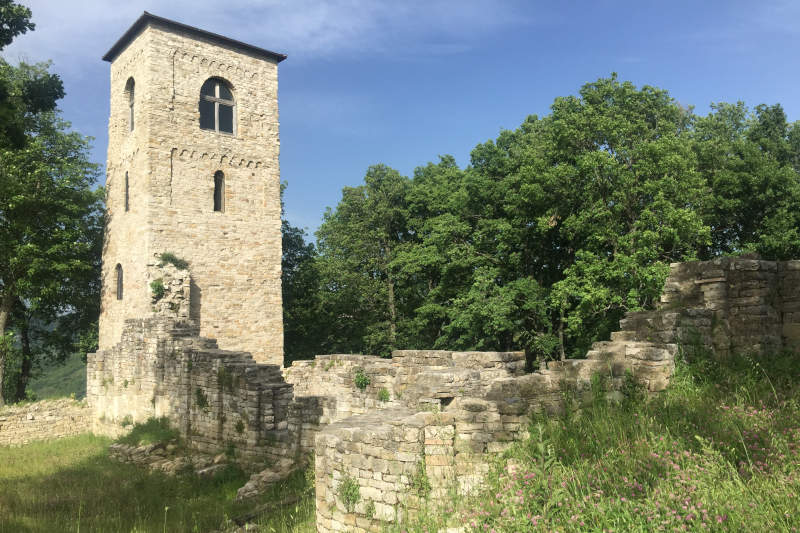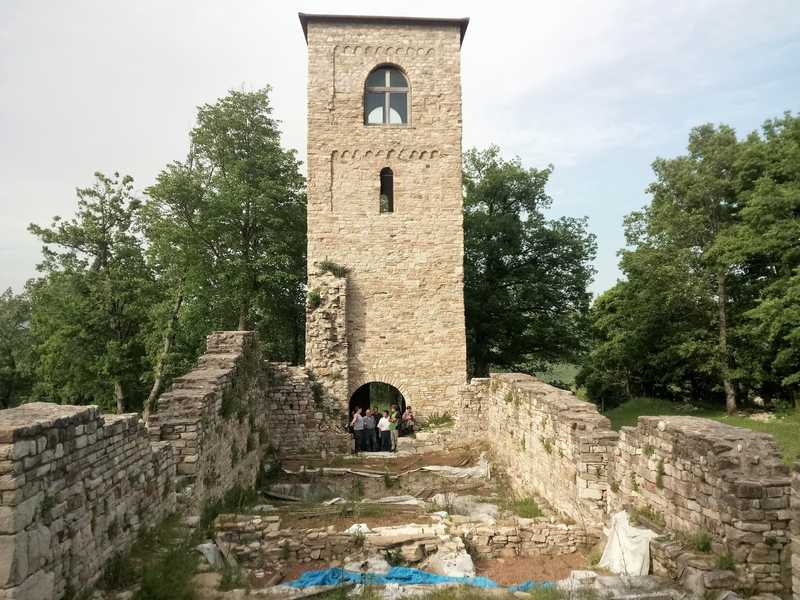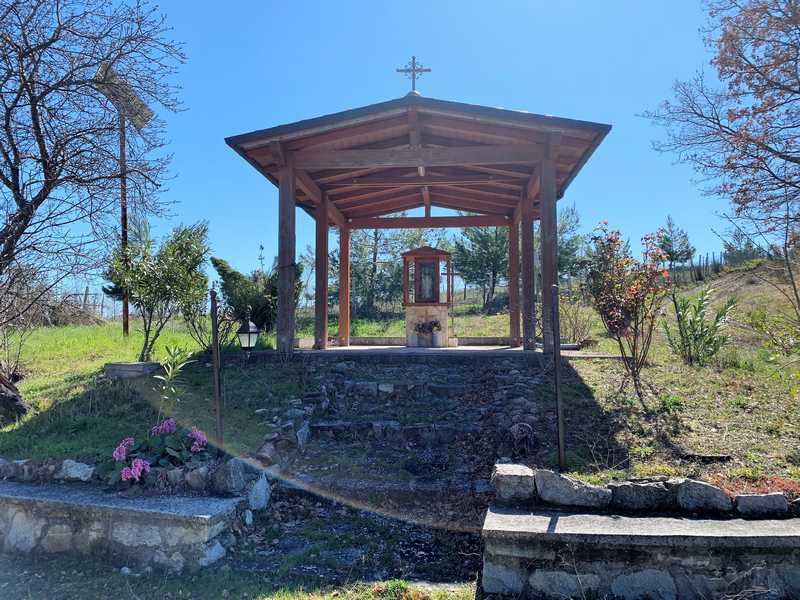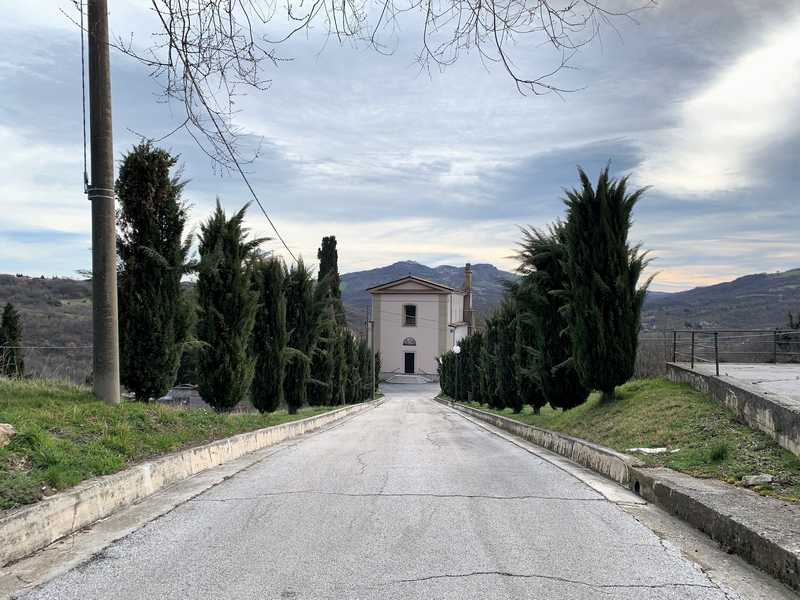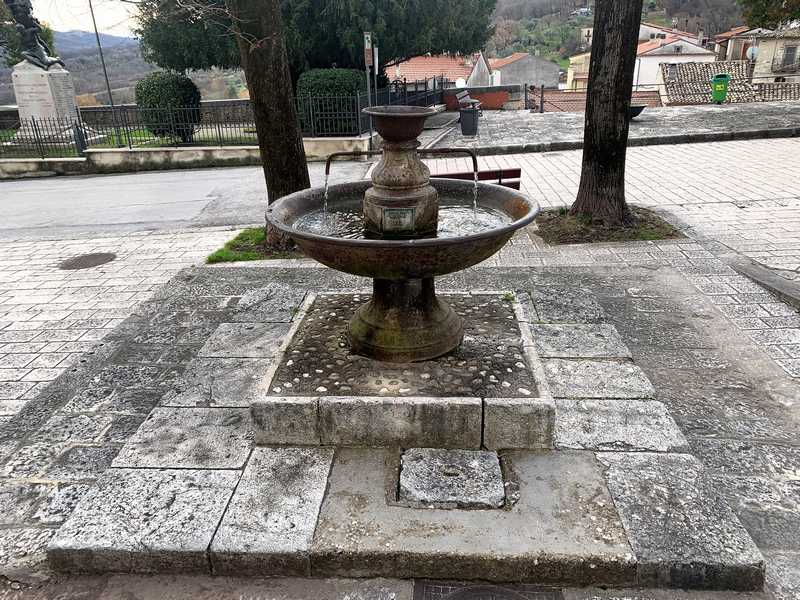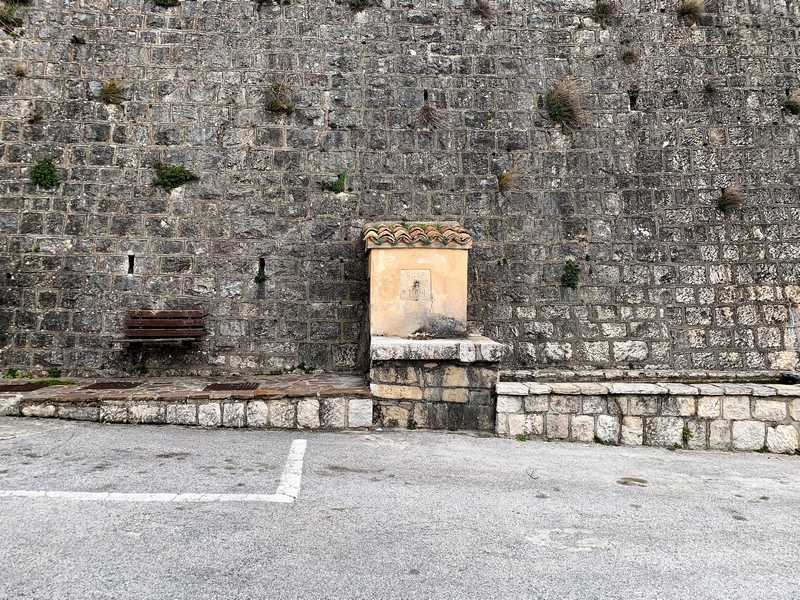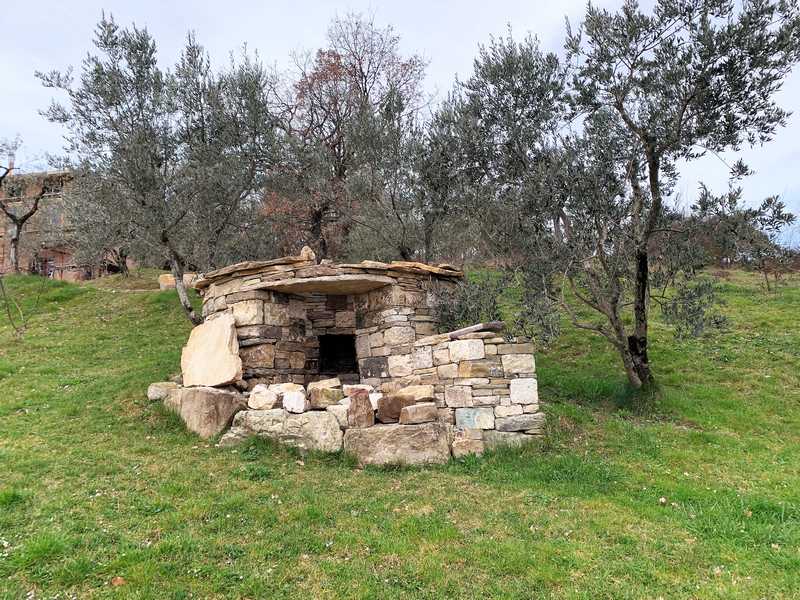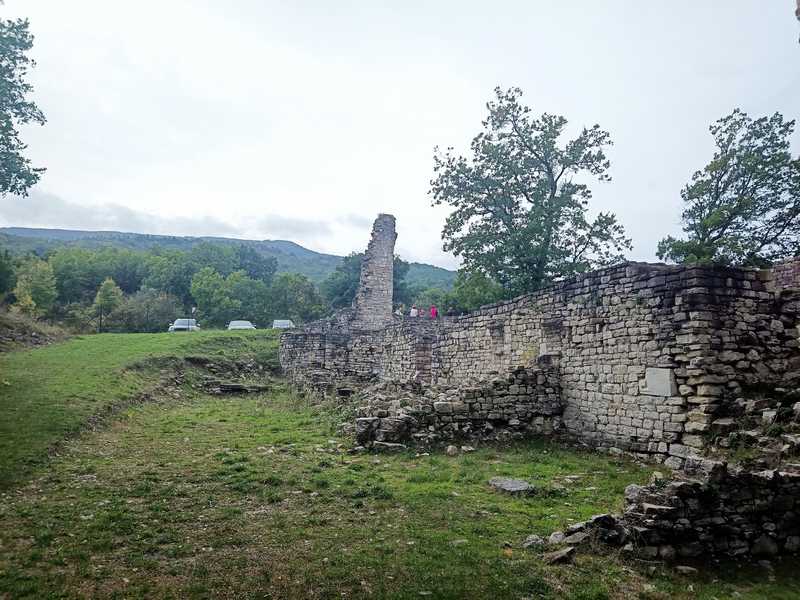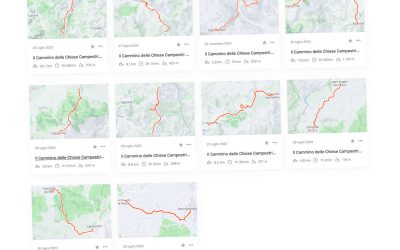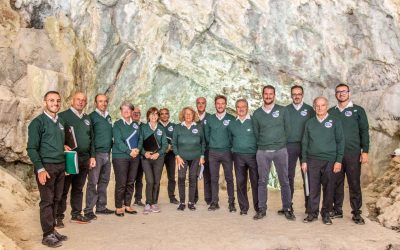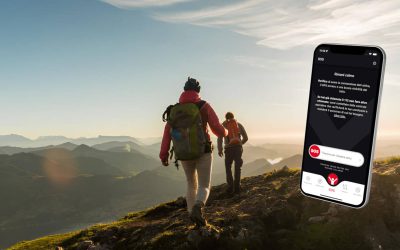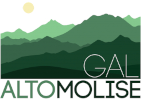| Itinerary | WAY OF THE RURAL CHURCHES - Itinerary 1: Civitanova del Sannio - Poggio Sannita |
|---|---|
| Region | |
| Start Point | |
| Difficulty | |
| Lenght | |
| Walking time | |
| Height difference | |
| Maximum Quota |
Course description
This could be the first stage of the “The Way of the Country Churches“, starting from Civitanova del Sannio and arriving in Poggio Sannita. It is the longest leg of the route and requires more than 5 hours of walking, not including stops, due to the elevation differences present. Completing it in a single day requires good physical preparation. The environment traversed is evocative and fascinating, with views that change along the way. Civitanova del Sannio lies in a cradle at the foot of the Montagnola Molisana, surrounded by agricultural and rural hills. Poggio Sannita sits on a hilltop overlooking the valley of the Verrino Torrent. The route begins on the main paved road, but soon we enter a narrow municipal road that takes us to the “Regio Tratturo Celano-Foggia“. We cross a steep descent along the sheep-track, witness to a forgotten transhumance. Having reached the valley, we leave the Tratturo and continue on the “Pescolanciano-Castel Del Giudice Tratturello.“. After a few steps on the valley floor road, the Tratturello faces a significant climb along a ridge trail, we will admire breathtaking views and immense rural landscapes that will accompany us all the way to Poggio Sannita. This stage represents a journey to discover the beauty and authenticity of the Molise region. We will immerse ourselves in unspoiled nature, appreciate the history and culture of these lands, and enjoy spectacular views all along the way. Although challenging, it will be a rewarding stage, leading us to discover fascinating places along “The Way of the Country Churches.”
Useful information
Equipment and practical advice
EQUIPMENT
To optimize your equipment, carefully read information about the route to be taken and the weather and climate forecast. This could be a list of basic equipment:
backpack suitable for real needs – At least 1L of water (2 in warm months/hot drink in winter) –
Hiking map – guide – sunglasses – multifunctional penknife – head flashlight – smartphone battery charger – powerbank – camera – insect repellent – first aid kit – rain jacket – airtight bag for valuables and clothing to keep dry in case of rain – bag for trash – anti-inflammatory ointment –personal medication.
Bring some light and nutritious food such as dried fruits, chocolate bars, candy, honey (energy snack). Pack your lunch in advance or be sure to pass through a town in case you need supplies. Bring trekking poles that assist in pushing uphill and help with stability on rough trails. The presence of streams and wooded trails makes some trails impassable and very muddy in heavy rains. High, waterproof hiking shoes are essential here, along with good quality (breathable) socks, which should never be underestimated! Your clothing should not lack: Windbreaker/waterproof jacket; Hat; Gloves for low temperatures.
TIPS & BEHAVIOR
Although it may seem superfluous, we recall the need to behave properly and respectfully toward others and the environment, each person making his or her own contribution by bringing back with them what would harm the environment. The path can be walked all year round, but of course spring and autumn offer the best weather and landscape conditions. For many high stretches, periods of large winter snowfall should be avoided, and in the hottest summer period, water supply and travel time should be well calculated to move during the milder hours and stop during the hottest hours. The path is well marked with comfort flags and marker arrows.
Let’s not damage the plants, let’s remember that we walk through protected environments that need to be protected. We do not light fires. We keep dogs on a leash or harness, mandatory in protected areas. We do not abandon waste. We prevent all fire hazards. We also take into account that some trails may be challenging in bad weather conditions. We always follow the official trails and when in doubt turn back to the last marked trailhead. In Molise, free camping is prohibited in certain areas, therefore, facilities that can accommodate must be used.
CAI Classification of Routes
Italian Alpine Club classification of routes according to difficulty in hiking and cycling
EXCURSION SCOPE
T = Tourist
FEATURES
Routes on cart tracks, mule tracks or obvious paths that pose no uncertainties or problems of orientation, with modest inclines and moderate elevation changes.
SKILLS AND COMPETENCIES
Require basic hiking knowledge and physical fitness for walking.
EQUIPMENT
Appropriate clothing and footwear are still required.
E = Hiking
FEATURES
Routes that represent the majority of hiking routes, thus among the most varied in terms of natural environments. They take place on mule tracks, trails and sometimes tracks; on different terrain by geomorphological and vegetation context (e.g., pastures, undergrowth, debris, scree). They are generally marked and may have steep sections. Easy, unexposed rock passages can be encountered that require the use of hands for balance. Any exposed spots are usually protected. They can cross flat or shallowly sloping areas on residual snow.
SKILLS AND COMPETENCIES
They require sense of direction and hiking experience and adequate training.
EQUIPMENT
Suitable equipment with special regard to footwear is required.
EE= Experienced hikers
FEATURES
Nearly always marked routes that require ability to move along trails and tracks over impervious and/or treacherous terrain (steep and/or slippery slopes of grass, rocks or stony debris), often unstable and uneven. They may have exposed sections, traverses, ledges or rocky sections with slight technical difficulties and/or equipped, while via ferratas proper are excluded. They are developed on medium to steep slopes. Crossing sections on snow may be necessary, while all glacier routes are excluded.
SKILLS AND COMPETENCIES
Need excellent hiking experience, orienteering skills, knowledge of the characteristics of the mountain environment, sure-footedness and absence of vertigo, evaluative and decision-making skills as well as adequate physical fitness.
EQUIPMENT
Require appropriate equipment and gear for the planned itinerary.
EEA = Experienced hikers with equipment
A ferrata is defined as a route whose sections on rock are specially equipped with metal structures: cables, chains, ladders, pegs and stirrups, which facilitate and enable its progression. They provide for the use of personal protective equipment certified according to current regulations (harness, via ferrata kit and helmet) and adequate technical preparation. They are marked at the start by special signs and meet precise construction and regulatory criteria.
Points of interest
Monastery of St. Benedict - De Jumento Albo
The church and Monastery of St. Benedict known as De Jumento Albo (Of the White Horse) are located a short walk from the Castel di Sangro-Lucera sheep-track and with a wide view of the Upper Trigno Valley. The monastery is among the oldest Benedictine settlements built between the year 1000 and 1100 in this area along with those located in the nearby towns of Pietrabbondante, Carovilli and Frosolone. Several documents have been found concerning the church and monastery, also called St. Benedict of Trigno, or St. Benedict of Bagnoli. In particular, a notarial document, a deed of gift dated 1002, has led scholars to assume that the founding of this place is to be linked to the aristocratic families whose power insisted on this territory. There is speculation that the founder belonged to either the Abruzzi Marsi family or the Borrelli family. The 1002 deed records the donation by Count Berardo and his wife Gemma of the church with its appurtenances to an abbot named Peter. About 20 years later, in 1020, the same monastery would be ceded by Abbots Peter and Paul to Athenulf, abbot of the imposing monastery of Monte Cassino. The monastery would be active and flourishing until 1465, the year of the disastrous earthquake that evidently damaged it to such an extent that the monks were forced to abandon it. The structure went on to other uses, mainly related to transhumance, because of its proximity to the sheep trail. In the map of the Tracturi made by Ettore Capecelatro in the mid-17th century, the church and monastery are well marked. However, the church is depicted without the characteristic bell tower.
Recent excavations conducted by Suor Orsola Benincasa University have shed light on the history and foundation of the site. In particular, the presence of the massive bell tower, which is still easily identifiable though heavily damaged, would have made the appearance of the monastery of San Benedetto De Jumento Albo very similar to that of the important monastic sites of San Vincenzo al Volturno and Montecassino.
Church of St. Mary of Mount Carmel
3D Map
The linked App is not related to the website, but provides additional convenience in using the presented content. Its use is voluntary. If the app is not yet installed on your device, you will be redirected to the corresponding App Store.
Civitanova del Sannio – Poggio Sannita
(km 25.20)
Itinerary 1
Departure: Civitanova del Sannio
Arrival: Poggio Sannita
Distance: 25.20 kilometers
Travel time: 5h 30′
Difficulty: Hiking
Height difference: +850 -850
51% asphalt – 6% cart tracks – 43% dirt roads
Cyclability: Yes – presence of sections with steep slopes
Recommended Period: Spring, summer, autumn
GPX files: Download
![]()
![]()
![]()
![]()
![]()
Frame or click the QR code and open the Web App
It should be noted that the routes may include sections where vehicular traffic is concurrent.
Photographs
Other Itineraries
![]() I1: Civitanova del Sannio – Poggio Sannita
I1: Civitanova del Sannio – Poggio Sannita![]() I2: Poggio Sannita – Belmonte del Sannio
I2: Poggio Sannita – Belmonte del Sannio![]() I3: Belmonte del Sannio – Agnone
I3: Belmonte del Sannio – Agnone![]() I4: Agnone – Capracotta
I4: Agnone – Capracotta![]() I5: Capracotta – Pescopennataro
I5: Capracotta – Pescopennataro![]() I6: Pescopennataro – Sant’Angelo del Pesco
I6: Pescopennataro – Sant’Angelo del Pesco![]() I7: Sant’Angelo del Pesco – Castel del Giudice
I7: Sant’Angelo del Pesco – Castel del Giudice![]() I8: Castel del Giudice – Capracotta
I8: Castel del Giudice – Capracotta![]() I9: Poggio Sannita – Castelverrino
I9: Poggio Sannita – Castelverrino![]() I10: Castelverrino – Agnone
I10: Castelverrino – Agnone
Highlights
Mountain safety: GeoResQ, the free app that connects you with rescuers in an emergency
GeoResQ, www.georesq.it, is a service run by the National Alpine and Speleological Rescue Corps, promoted by the Italian Alpine Club with the support of the Ministry of Tourism. The free downloadableapplication dedicated to mountain activities can directly send a call...
Concert by the CAI Choir of Lanciano in the Cloister of San Francesco di Agnone
AgnonEstate 2024 Appointments. On Friday, August 2 , at 9:30 p.m., in the beautiful setting of the Cloister of San Francesco, the Italian Alpine Club (CAI) Choir of Lanciano will perform a brilliant and sophisticated repertoire betweenclassic Alpine songs and Abruzzo...
Mountain safety: GeoResQ, the free app that connects you with rescuers in an emergency
GeoResQ, www.georesq.it, is a service run by the National Alpine and Speleological Rescue Corps, promoted by the Italian Alpine Club with the support of the Ministry of Tourism. The free downloadableapplication dedicated to mountain activities can directly send a call...
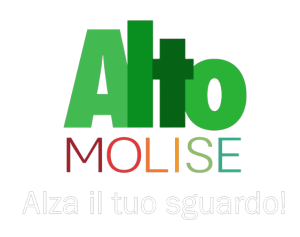

The “Walk of the Country Churches” is an outdoor trail of about 90 kilometers connecting 9 historical centers e 15 small churches scattered throughout the territory of Agnone, Belmonte del Sannio, Capracotta , Castel del Giudice, Castelverrino, Civitanova del Sannio, Pescopennataro, Poggio Sannita e Sant’Angelo del Pesco.
© The Way Of The Country Churches | Project | Credit | Privacy Policy | Cookie Policy | Contact
INITIATIVE FUNDED BY THE FEASR – European Agricultural Fund for Rural Development – PSR Molise Region 2014 – 2020

